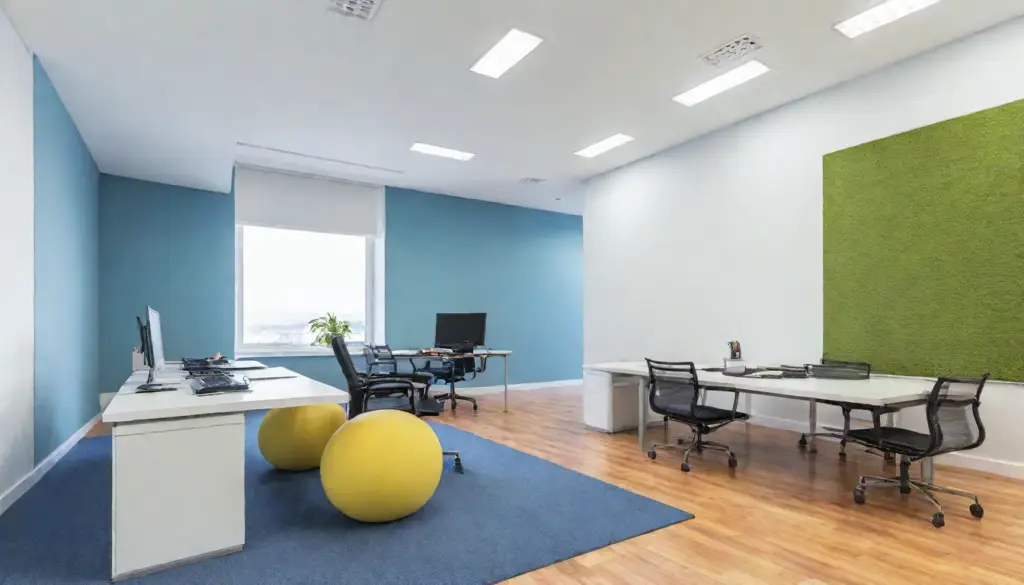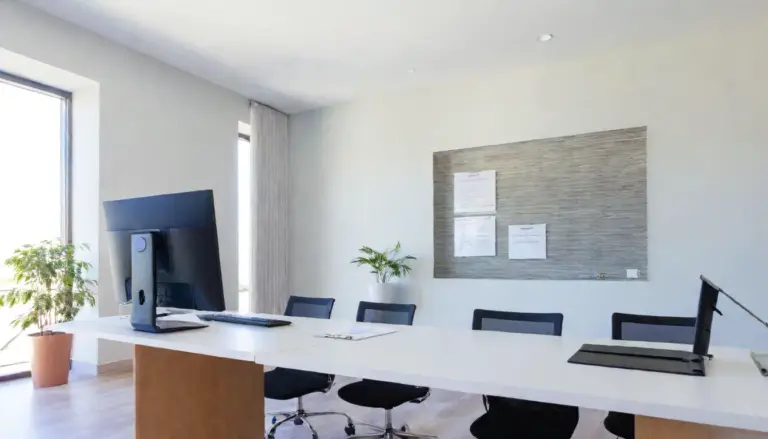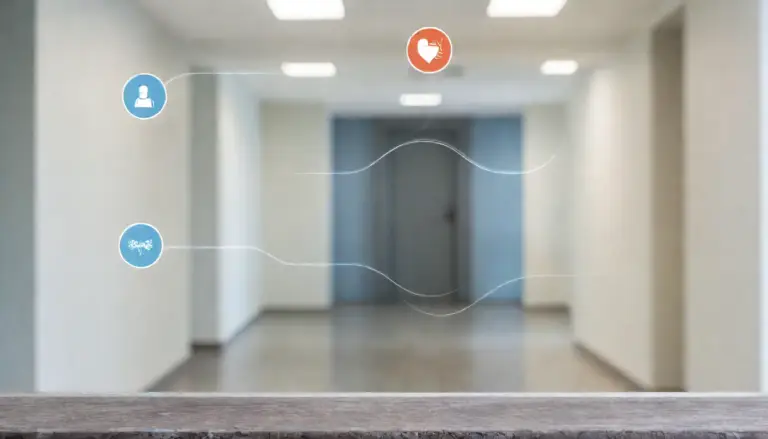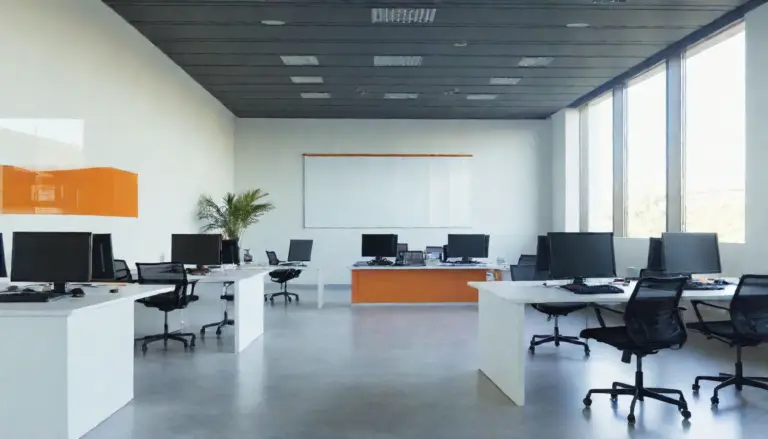Life can get loud. Whether you run a business, work in an office or classroom, have a home theater, or run a machine in a factory, you know how much noise gets made on a regular basis. Though it may seem like there’s nothing you can do other than put in earplugs, there is a solution that can help you decrease the decibel level and get some peace of mind—sound absorption.
What Is Sound Absorption and How Does It Work?
First, it’s important to understand what sound absorption is and how it works. The name is pretty self-explanatory; sound absorption involves controlling sound in a space by using materials that can absorb the sound, lowering the volume levels. This directly addresses issues like echo, reverb, and high volume by controlling and limiting the sound in a space.
That may sound simple, but sound absorption is actually a complex science. The space, the source of the noise, the volume, and more must all be carefully considered to get the best results for sound absorption. Acousticians have to take into account all of these factors—and make sure they use the right types of sound absorption—to ensure that the sound is effectively dampened to an acceptable level.
Types of Sound Absorption
Acousticians utilize various types of sound absorption materials to get the best results possible in a given space. Each of these materials has its own strengths and is used for different purposes, so let’s briefly cover each of them and what they’re used for.
Baffle
Acoustic baffles are typically mounted from or on ceilings and are similar in composition to acoustic panels. In layman’s terms, baffles (and panels) absorb sound, causing the fibers in the panel to vibrate, which then converts sound into heat. This decreases the volume of the sound, giving the desired result.
What makes baffles different from panels is that they are typically hung from or mounted to the ceiling. They are most commonly used in large spaces with high ceilings, as those buildings tend to be very reflective and have issues with echo and reverb.
Panel
As described above, panels absorb sound by converting it into thermal energy (heat). However, panels are typically mounted to the wall and are much more versatile than baffles. Acoustic panels are used in spaces of all sizes, ranging from bedroom studios and offices to conference rooms and auditoriums.
Tile
Acoustic tiles are also similar to panels and baffles, but they are smaller and often more modular than panels or baffles. Acoustic tiles utilize the same basic principle of absorbing sound and turning it into heat.
However, they are small and easier to customize for the particular space, especially smaller rooms like home theaters or small offices. Tiles can easily be arranged and rearranged to get the best possible results. They also tend to look better, allowing you to easily add sound absorption without sacrificing aesthetics.
Cloud
Acoustic clouds are an interesting form of sound absorption that functions the same way as the other types, but with a more stylish twist. As the name suggests, acoustic clouds are sound absorbing materials placed on or hanging from the ceiling (like clouds) to absorb sound.
Functionally, they absorb sound just like panels, baffles, and tiles do. However, they tend to be more effective because they are more open to the air, allowing them to dampen and absorb more of the room’s sound. They can also add a nice flair to the room; acoustic clouds can look great and most won’t even notice it’s a form of sound absorption.
Sound Masking and How It Differs
Let’s take a moment to talk about sound masking and how it differs from sound absorption. Many think that these two are the same thing, but they’re actually opposites. Sound absorption aims to absorb sound, decreasing the overall volume level. Sound masking however aims to introduce specific new sounds that can “cancel out” the unwanted sounds.
This may sound very counterintuitive, but increasing the ambient sound level can make a space sound quieter. By raising the ambient volume, you drown out the unwanted sounds that cause distractions, such as people talking, copiers beeping, phones ringing, machines whirring, etc. It’s the same principle used by many noise-canceling headphones that introduce ambient use to “cancel out” or “cover up” the unwanted noise.
Sound masking can be a very effective solution depending on the environment. Sound masking is particularly well suited for quieter environments. For example, sound absorption can only help so much in a place like a library where even the quietest sounds can be heard. However, sound masking can provide enough ambient noise that sounds like a book closing or pen dropping can’t be noticed.
Why You Need Sound Absorption
With all the basics of sound absorption covered, it’s time to look at the benefits of sound absorption and why it might be a good idea to utilize sound absorption in your workplace, home, business, or other space.
Better Acoustics
The most obvious benefit is better acoustics. If you’re a musician or someone who cares about acoustics, the benefit is obvious. But if you aren’t, there are still a lot of benefits. Voices are less echoey and easier to hear, speeches or events will sound better, and you’ll have more sonic privacy as well. If you have a home theater or other room with a lot of audiovisual technology, sound absorption will greatly increase the quality of your sound.
Quieter, More Welcoming Environment
We all want our homes and workplaces to be welcoming, and sound absorption is a great way to do that. By decreasing the volume levels, you make your space much more comfortable and calming.
We all know how loud sounds can make you stressed, and the opposite is true too. Making your space quieter is a great way to make it more welcoming and comfortable. Whether you have a restaurant and want to make it feel less hectic or an office and want to limit echo, sound absorption is something you should consider.
Increased Productivity
A less obvious benefit is increased productivity. Sounds can be distracting, especially if you’re overhearing conversations or hearing loud machinery all the time. By installing sound absorption and making your space quieter, you make it easier to focus and increase productivity.
Safety
Depending on your situation, sound absorption can increase safety as well. Loud sounds can cause serious hearing damage over time, and sound absorption can decrease volume levels and prevent some of that damage. They can also increase safety by making things easier to hear. Cutting back on sound levels can make it easier to hear someone calling for help, warning someone, a machine malfunctioning, etc.
Conclusion
Though it may seem like a minor thing, sound absorption can have a huge impact on your home, office, workplace, or other space. It can decrease volume levels, increase the quality of sound, reduce reverb and echo, and make your space more comfortable. By doing so, you can also increase your productivity, better your environment, and increase safety.
If you are having issues with poor sound quality, echo, reverb, or noise-related stress in your home or business, sound absorption is the solution you need. Reach out to our experts at Tesketra to learn more about how sound absorption can be the solution you’ve been looking for!

















